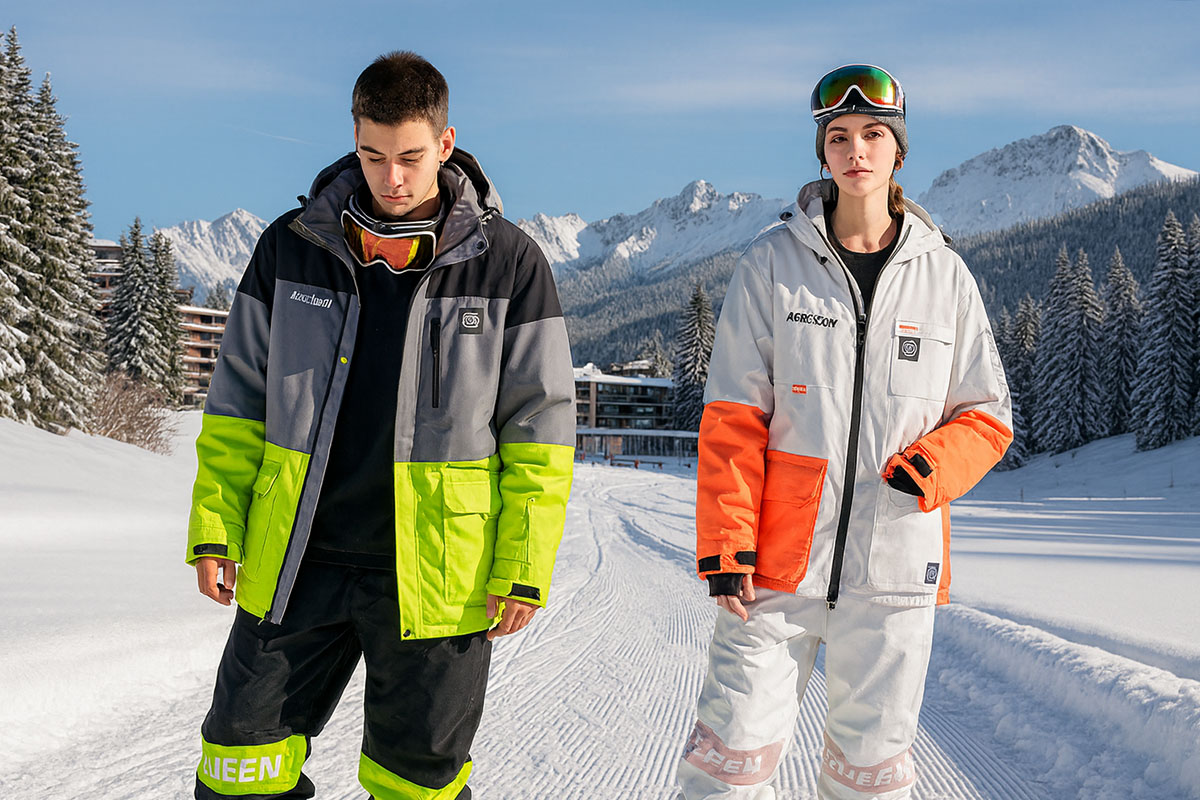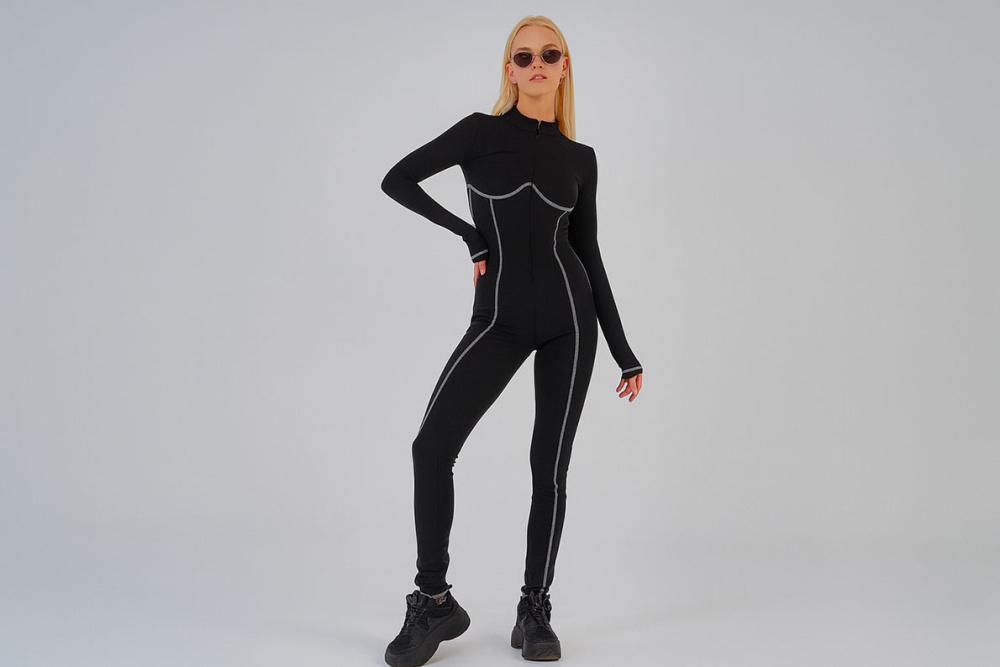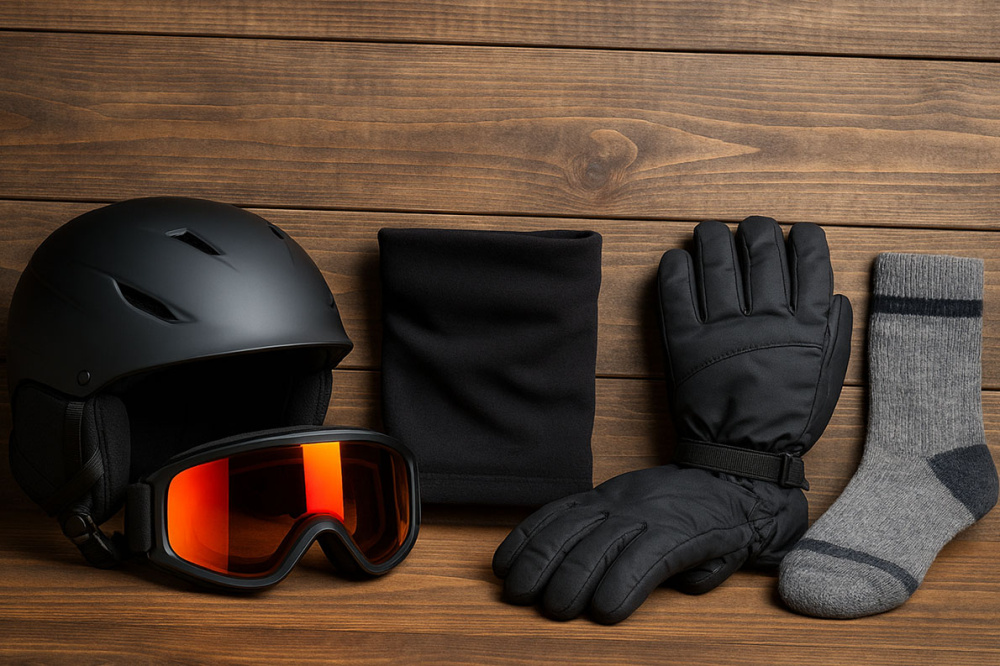How to Dress Properly for Skiing or Snowboarding in Different Weather Conditions

- The Layering System — Your Secret to Comfort
- Choosing the Right Thermal Underwear
- Waterproofing and Breathability
- Accessories — The Small Details That Make a Big Difference
- Adapting to Cold, Wind, and Heavy Snow
- The Art of Balancing Warmth and Freedom
- Final Thoughts — Dress Like a Pro, Ride Like a Pro
When you head to the mountains, the right clothing can make or break your experience. Skiing and snowboarding are as much about preparation as they are about passion. Choosing the right gear not only keeps you warm and dry but also lets you move freely and enjoy every slope. The mountain doesn’t forgive neglect — but it rewards those who plan ahead. To make your day on the snow perfect, don’t forget about renting quality gear at https://www.comfort-ski.com/ski-equipment-rent/
There’s no bad weather in the mountains — only bad clothing choices.
A good outfit is like a protective shield that keeps you comfortable while nature shows its strength. When the cold bites your cheeks, when snowflakes fall thick as feathers, or when the sun glows fiercely against the white, every layer you wear matters. Dressing correctly means not just warmth but balance — between protection, breathability, and freedom.
The Layering System — Your Secret to Comfort
The golden rule of winter sportswear is layering. Instead of one thick jacket, wear multiple thin layers that trap warmth and wick away moisture. This system lets you adjust your outfit depending on the temperature and intensity of activity. It’s not just about stacking clothes — it’s about creating harmony between insulation and ventilation.
Base layer (thermal underwear)
This is your second skin. It should be snug, moisture-wicking, and quick-drying. Avoid cotton — it soaks up sweat and makes you feel cold. Instead, choose merino wool or synthetic fabrics like polyester or polypropylene. These materials keep you warm while allowing your body to breathe.
A high-quality base layer helps you stay dry even when you’re giving your best on a challenging slope. It’s like an invisible comfort zone that maintains your body’s microclimate no matter how the weather changes.
Mid layer (insulation)
This layer keeps the heat close to your body. Fleece jackets, down vests, or synthetic puffers work great. If it’s very cold, go for a thicker insulating layer, but make sure it doesn’t restrict your movements.
The middle layer can be your “heat battery.” On freezing mornings, it stores your warmth, and during intense rides, it prevents overheating by allowing airflow.
Outer layer (protection)
Your shell jacket and pants shield you from wind, snow, and moisture. Look for waterproof and windproof materials with good breathability ratings — ideally 10,000 mm or higher. Features like ventilation zippers, powder skirts, and adjustable cuffs are bonuses that make a big difference.
Layer smart, not heavy — the secret to staying warm is managing heat, not trapping sweat.
A perfectly layered outfit feels light and flexible, never bulky. It allows you to move freely, carve deep turns, and enjoy both the calm of the lift ride and the rush of the descent.
Choosing the Right Thermal Underwear
Thermal underwear is often underestimated, but it’s the foundation of your comfort. Its main task is to remove moisture from the skin and regulate temperature. The right fabric can keep you warm even when you’re sweating hard on a long run.
Merino wool is the king of thermals — it’s natural, odor-resistant, and incredibly warm. Synthetic options are lighter, dry faster, and cost less, making them great for beginners. For the best results, make sure your top and leggings fit snugly but not tightly — they should feel like a gentle second skin.
Tips for picking thermals
-
Choose merino wool for cold days and synthetics for milder weather
-
Avoid cotton completely
-
Check the “weight” of the fabric — mid-weight for most days, heavy-weight for freezing conditions
Another small but essential detail — flat seams. They prevent chafing and ensure smooth comfort under outer layers. Some advanced thermals also include compression zones for better blood circulation, keeping your muscles warm and reducing fatigue.

“A great base layer doesn’t just keep you warm — it keeps you strong throughout the day.”
Waterproofing and Breathability
When snow starts falling or you take a few tumbles in powder, your gear’s waterproofing becomes crucial. Outerwear should have sealed seams, a durable water-repellent (DWR) coating, and good breathability to prevent overheating. Look for materials rated at least 10,000 mm for waterproofing and 10,000 g/m² for breathability.
Breathability is especially important — while you’re active, sweat builds up, and you need fabrics that let it escape. Otherwise, you’ll end up wet from the inside. Jackets with underarm vents and pants with mesh openings are great for adjusting temperature quickly.
A well-designed shell will also protect you from the cutting mountain wind. In freezing gusts, even small gaps can feel like open doors to the cold. That’s why adjustable hoods, snow skirts, and tight wrist cuffs matter so much.
“Snowproof outside, breathable inside — that’s the magic combination every rider needs.”
Before you buy, always test how the material feels in motion. Bend, twist, lift your arms — good waterproof gear should move with you, not against you. Freedom is just as important as dryness.
Accessories — The Small Details That Make a Big Difference
The right accessories can elevate your comfort from good to excellent. Don’t underestimate how much warmth and protection a few smart add-ons can bring.
Essential accessories for skiing and snowboarding
-
Helmet for safety and warmth
-
Goggles with UV protection and anti-fog lenses
-
Neck gaiter or balaclava to protect from wind and snow
-
Waterproof gloves or mittens with insulation
-
Wool or synthetic socks — never double layers
-
Thin liner gloves for extra warmth on cold days
Accessories add personality too — bright goggles, stylish neck warmers, or patterned beanies make you stand out on the slope. But beyond looks, they are your survival tools in unpredictable weather. Always have an extra pair of dry gloves or socks in your backpack. A small thermos with tea or cocoa can also work wonders when you take a break by the lift.

“In the mountains, accessories aren’t extras — they’re essentials that save your comfort and your day.”
Adapting to Cold, Wind, and Heavy Snow
Mountain weather changes fast. What starts as a calm morning can turn into a blizzard by noon. Knowing how to adapt your outfit helps you stay comfortable no matter what nature throws your way.
In extreme cold
Add an extra mid-layer or wear thicker thermal underwear. Cover exposed skin, especially around the neck and face. Hand warmers and foot warmers can be lifesavers. Don’t forget to protect your lips and cheeks with a good cold cream — the wind can burn them even more than the sun.
In strong wind
A good windproof shell is your best defense. Make sure cuffs and hems are snug to keep cold air out. Goggles and a balaclava will protect your eyes and cheeks. Tighten your hood so it doesn’t flap, and avoid scarves — they can freeze when wet.
In heavy snow
Waterproof everything — jacket, pants, gloves, and boots. Keep snow skirts closed and avoid cotton layers. Snow-resistant zippers and high collars will help keep melting snow out. When visibility drops, switch to goggles with yellow or rose-tinted lenses — they improve contrast in flat light.
“Mountains test your preparation — dress for the storm, and you’ll still enjoy the ride.”
The art of mountain adaptation is to stay one step ahead of the weather. Always check the forecast before heading out and pack backup layers. Confidence comes from preparation.
The Art of Balancing Warmth and Freedom
One of the biggest mistakes beginners make is overdressing. It’s easy to assume more clothes equal more warmth, but that leads to overheating and sweat. Once you stop moving, that moisture cools quickly, making you feel cold and damp. The goal is to stay slightly cool at the start — your body will warm up as you ride.
Before hitting the slopes, move around, bend your knees, and make sure your outfit allows full flexibility. You should feel comfortable lifting your arms, turning, and crouching. Good ski and snowboard clothing doesn’t restrict your movements — it works with them.
“You don’t fight the mountain — you flow with it. Dress to move, not just to stay warm.”
Freedom of motion is what separates a great ride from a struggle. Choose stretch fabrics and ergonomic designs. Once you find the balance between insulation and mobility, the mountain becomes your playground.
Final Thoughts — Dress Like a Pro, Ride Like a Pro
Dressing right for skiing and snowboarding isn’t about fashion — it’s about performance, safety, and joy. When your body stays dry, warm, and free to move, every run feels effortless.
So, layer wisely, protect yourself from wind and moisture, and choose quality gear that suits your needs. From your first fall to your best jump, the right outfit will keep you smiling all the way down the mountain. The difference between comfort and discomfort often lies in one well-chosen layer.
The mountains reward those who respect them — and the right gear is your ticket to endless adventure.
And remember: nature will always have the last word. But if you dress right — you’ll always have the last laugh.
Discover unforgettable ski adventures with Comfort Ski
We offer the best routes so you can enjoy the beauty of the mountains and slopes without any hassle.
-
Exciting trip to Hunter Mountain with convenient transportation straight to the slopes: https://comfort-ski.com/trips/hunter-mountain-ski-transportation.html
-
Comfortable ride to Mountain Creek with transfer and on-site support: https://comfort-ski.com/trips/mountain-creek-ski-transportation.html
-
Enjoy the snowy landscapes of Windham — join us here: https://comfort-ski.com/trips/windham.html
-
Explore the slopes of Camelback with a friendly group: https://comfort-ski.com/trips/camelback.html
-
Experience the magic of Belleayre Mountain — more details at: https://comfort-ski.com/trips/belleayre-mountain-ski.html
Book your winter adventure today — limited spots available.
Get ready for skiing, fun, and new experiences!
